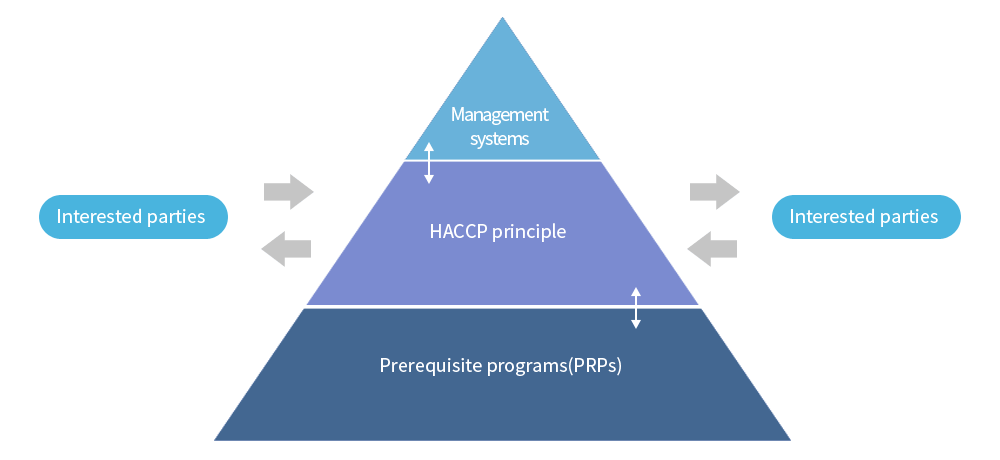ISO 22000:2018
ISO has published 22000: 2018, the food safety management system certification standard. All ISO 22000: 2005 certifications will be not valid after the expiration date by June 29, 2021, and all transitions to ISO 22000: 2018 must be completed by April 31, 2021.Therefore, existing ISO 22000 certified companies must transition to ISO 22000: 2018.K-Certi offers optimal certification services to help you make the transition faster and smoother.
Download certification application
ISO 22000 is an international standard applicable to all stakeholders in the food supply chain.
It defines the principles of mutual communication, system management, essential programs (PRPs) and HACCP, and is key elements to ensure food safety throughout the food supply chain.
Based on the ISO 9001 Quality Management System, ISO 22000 includes all 7 principles and 12 procedures of HACCP. The integration of these two systems allows organizations to achieve both the goals of ensuring food safety and improving performance.
ISO 22000 Food Safety Management System is an autonomous food safety management system that proactively prevents and manages food hazards that may arise at workplaces. Through the implementation of such food safety management systems, companies can meet the legal and consumer expectations and secure competitiveness for the continued growth of their organizations.
Necessity
Securing food safety emerged as an essential achievement for food-related organizations as a result of the recent emphasis on customer demand for food safety, and the introduction of a management system for food manufacturing and management has been widespread. Producers and suppliers in the food supply chain can be managed with food safety standards such as British Retail Consortium (BRC), EUREPGAP, and Good Manufacturing Practices (GMP) for HACCP food and food packaging, and ISO 22000, a Management System for food function and quality control.
Organizations (such as wholesale and retail merchants and consumer groups) recognize the standards listed above and want to provide food to organizations and bodies, they want to obtain certification for some of the certifications listed above. Several certifications to various food safety standards have resulted in the hassle and cost of obtaining them.
Also, standards and system management for food were handled in each country, but as trade increased, this caused much confusion among consumers.
The new International Standard, ISO 22000, which is currently being developed, can be a good solution to this problem.
Expectation effectiveness
- Establishment of Systematic Hygiene Management System
- production of food that is hygienic and safe.
- Maximizing Efficiency of the Hygiene Management System
- Increase company image and improve reliability
- Drive economic benefits by reducing product defect rate, consumer complaints, returns, and waste
Basic model

Certification scope
| Cluster | Categor | Subcategory | Certification scope |
|---|---|---|---|
| Farming | A Farming of animals | AI Farming of animals for meat/milk/eggs/honey |
|
| AII Farming of fish and seafood |
|
||
| Food and feed processing | C Food manufacturing | CI Processing of perishable animal products |
the production of vegetable products, including fish, marine products, meat, eggs, dairy products and fish products. |
| CII Processing of perishable plant products |
the production of vegetable products, including fruits and fresh juices, vegetables, grains, nuts and tofu. | ||
| CIII Processing of perishable animal and plant products (mixed products) |
the production of a mixture of animal and vegetable food, including pizza, lasagna, sandwiches, dumplings, and instant foods. | ||
| CIV Processing of ambient stable products |
the production of any kind of food circulating at room temperature, including canned, biscuits, snacks, edible oils, drinking water, beverages, pasta, flour, sugar, edible salt, etc. | ||
| Catering | E Catering | To prepare, store or deliver food for the purpose of eating in a food kitchen or separate space. | |
| Biochemical | K K Production of (bio)chemicals |
|
|





